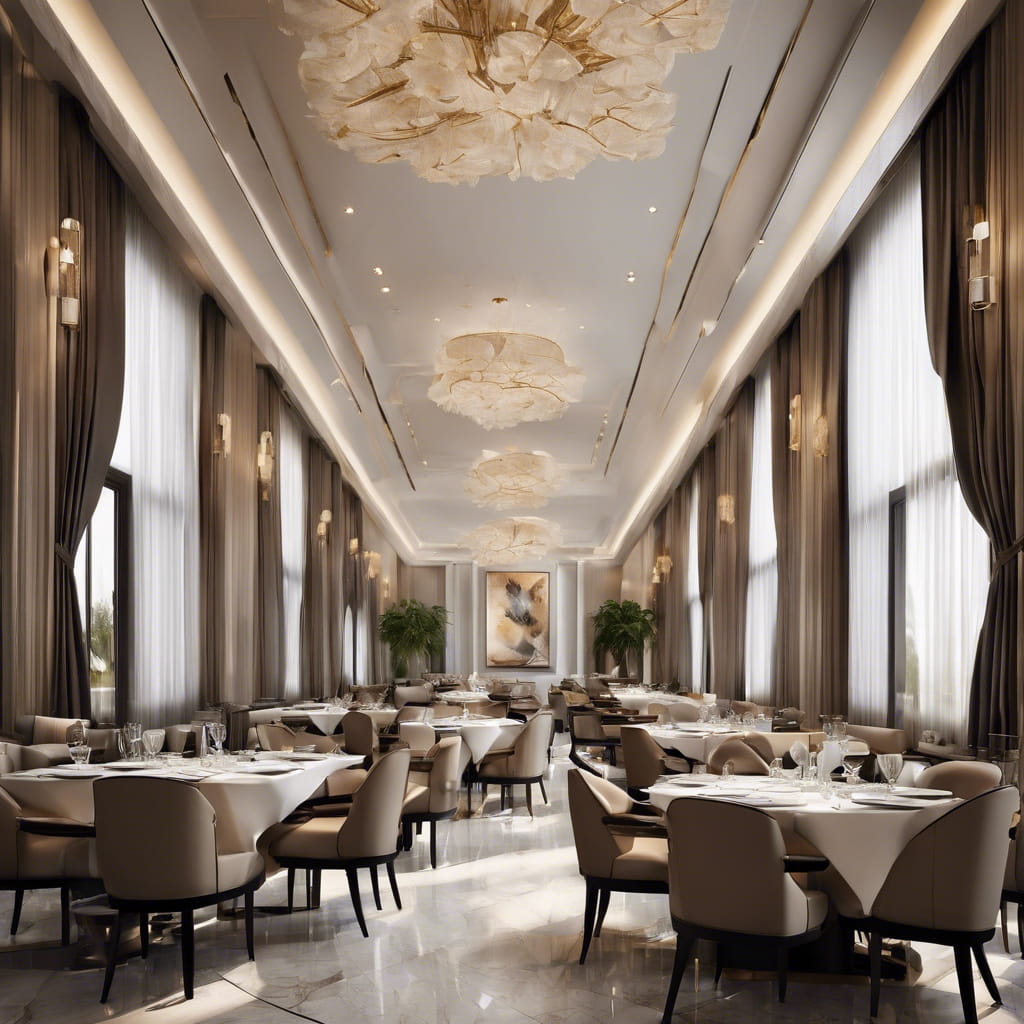Picture this: You step into a hotel dining room that doesn’t just awaken your taste buds but also stirs your soul. The ambiance is meticulously crafted, every detail exuding luxury. Long after the last bite, the experience lingers—a memory etched in time.
This magic lies in exceptional hotel dining room design. It’s the art of turning a simple meal into a cherished occasion—a place where guests connect, unwind, and create stories. But how can you achieve this enchantment?
Consider this blog post your culinary compass. We’ll explore eight inspiring design ideas tailored to your hotel’s unique personality—whether it’s a chic urban oasis or a charming countryside retreat.
From playful lighting schemes to captivating seating arrangements, we’ll reveal design elements that will leave your guests in awe (and reach for their cameras).
Get ready to elevate the hotel experience from good to extraordinary. After all, a memorable meal deserves a stage that matches its grandeur.
Hotel Dining Room Design Ideas
The dining room, often considered the heart of a home or a focal point in a hotel, is a space where aesthetics seamlessly intertwine with functionality.
In the following exploration, we’ll uncover a plethora of concepts ranging from elegant seating arrangements and chic lighting fixtures to luxurious table settings and artistic wall decor.
Choose a Theme that Aligns with the Hotel’s Concept
A thoughtfully chosen theme can tie all the elements of a hotel dining room together into one cohesive and memorable space. When designing the theme, it’s important to select one that aligns with the hotel’s overall concept, brand, and target demographic.
For example, a family resort may want to incorporate a fun, whimsical theme using bright colors and playful decor elements. Or a boutique hotel targeting couples could create an elegant, romantic ambiance with deep jewel tones, candlelight, and floral arrangements.
The theming should be carried through the dining room’s decor, furniture, lighting, and accessories. Instead of feeling random and disjointed, a strong theme makes the space feel curated, polished, and transportive. It also helps craft a distinct dining experience that guests will remember.
Some ways to incorporate a unified theme include:
- Using matching color schemes on the walls, table linens, fixtures, and artwork
- Selecting furniture with consistent styles, materials, and shapes
- Displaying decorative pieces that tie back to the theme’s concept or location
- Choosing lighting that enhances the desired ambiance
- Layering accent fabrics, patterns, and textures to complete the look
With careful planning and execution, a thoughtfully designed theme can turn an ordinary hotel dining room into an extraordinary, memorable destination for guests.
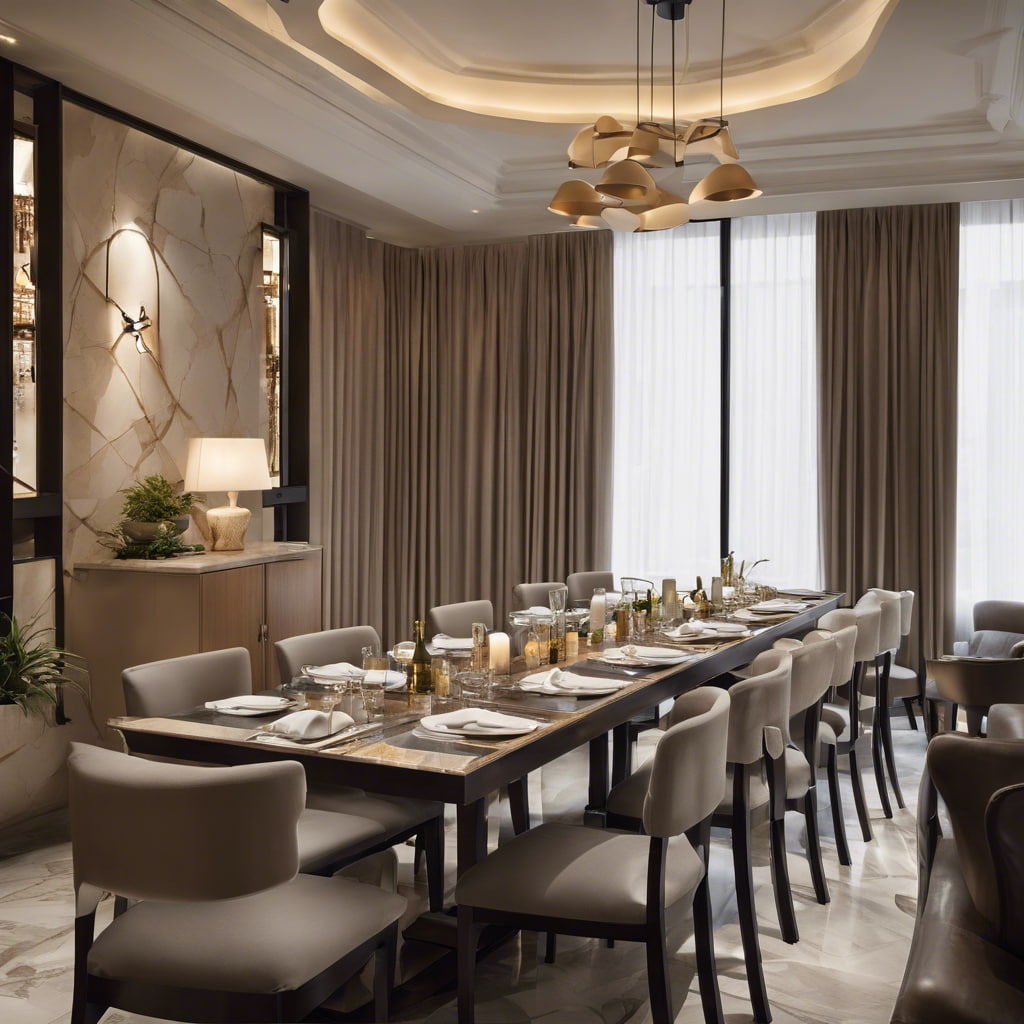
Focus on Lighting
Proper lighting design is crucial for setting the desired mood and ambiance in a hotel dining space. Lighting has a significant psychological impact that can make the area feel warm and welcoming or cold and sterile.
Large windows that allow abundant natural light help connect guests to the outdoors. Adjustable window treatments, such as sheer curtains or blinds, also provide options to control glare and brightness at different times of day.
For nighttime and supplemental lighting
decorative pendants, chandeliers, or wall sconces with dimmable fixtures add character and versatility. Positioned over tables, at seating nooks, or highlighting architectural details.
For overall ambient lighting
LED tape lights along cove moldings or wall-mounted uplighting are visually unobtrusive sources that prevent shadowy spots and uneven lighting.
With today’s technology
lighting schemes can be designed for automated adjustments from a wall panel or remote device according to the time of day and type of experience desired.
The thoughtful interplay of natural and artificial lighting sets the foundation for a warm, welcoming, and memorable dining experience that can be customized on demand.

Integrate Nature Elements
The integration of living plants, green walls, and access to daylight and views can make the dining room feel more open, airy, and relaxing.
Plants are a simple but impactful way to bring nature into the space. Greenery adds a pop of color, texture, and life to the environment.
Consider displaying potted plants, hanging gardens, or even large trees to make a statement. Place plantings strategically near windows or along the perimeter to soften the architecture.
Try to orient seating areas towards the windows so guests can enjoy the outdoor views and natural light. This simple connection with nature enhances the overall dining experience.
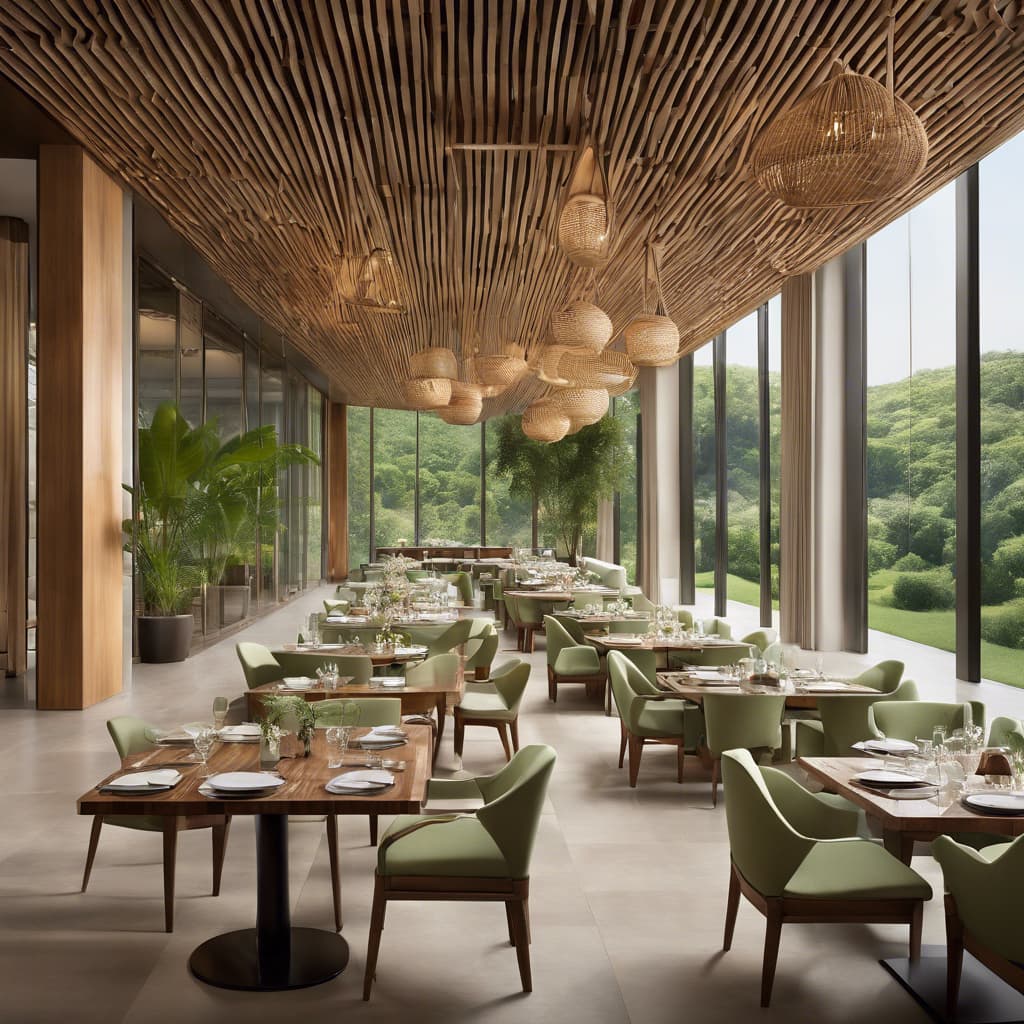
Utilize Unique Seating Arrangements
Careful consideration should be given to comfort, flexibility, and placement when selecting dining chairs, booths, banquettes, and other seating options.
- Freestanding banquettes in the center are ideal for medium-sized parties who desire a feeling of separation without total visual obstruction.
- Individual chairs offer flexibility for rearranging as needed to serve solo diners, couples, and odd-numbered groups.
- Bar stool seating at a kitchen counter or drink rail provides a casual vibe for unplanned gatherings.
- Thoughtful placement of the various seating components allows for both intentional intimate spaces and open areas that promote fluid movement and social intermingling.
- Creating zones within the dining room caters to guests who prefer quiet conversation as well as those seeking a lively vibe.
Most importantly, the furnishings and layout choices combine to offer guests the comfort and connection that turns a meal into a memorable social experience.
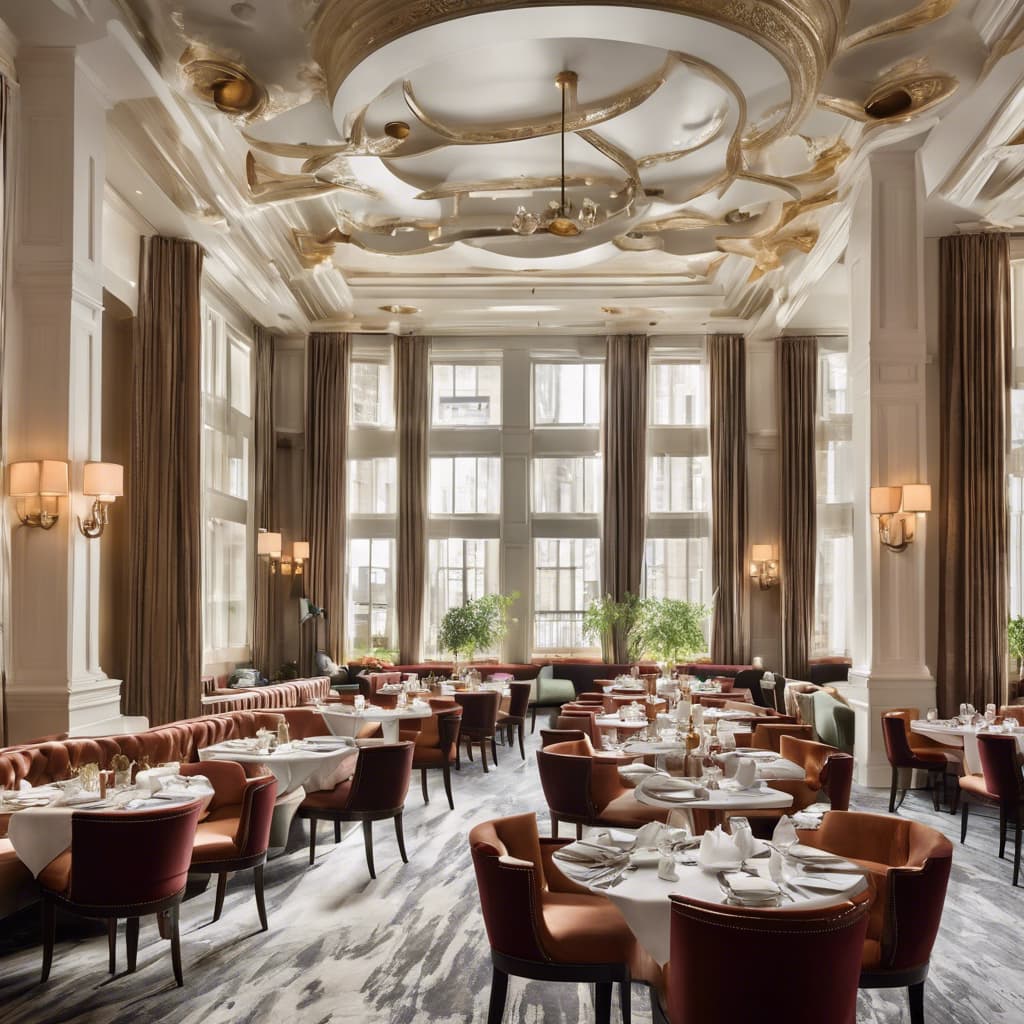
Pay Attention to Colors and Textures
The colors and textures used in a hotel dining room can have a significant psychological impact on the guest experience.
- Warm earth tones like reds, oranges, and yellows can stimulate energy and excitement.
- while cool blues and greens tend to be more calming and relaxing.
It’s important to consider both the mood you want to create as well as your brand aesthetics when choosing a dining room color scheme.
Incorporating different textures in the dining room décor also adds visual interest and depth to the space. The textures of materials like
- wood
- fabric
- concrete
- and metals
each imparts their feeling.
- Using textured flooring
- upholstered seating
- accent walls
- lighting fixtures
allows you to play with varied tactile elements. Just be sure to find the right balance of textures that aligns with the hotel’s environment.
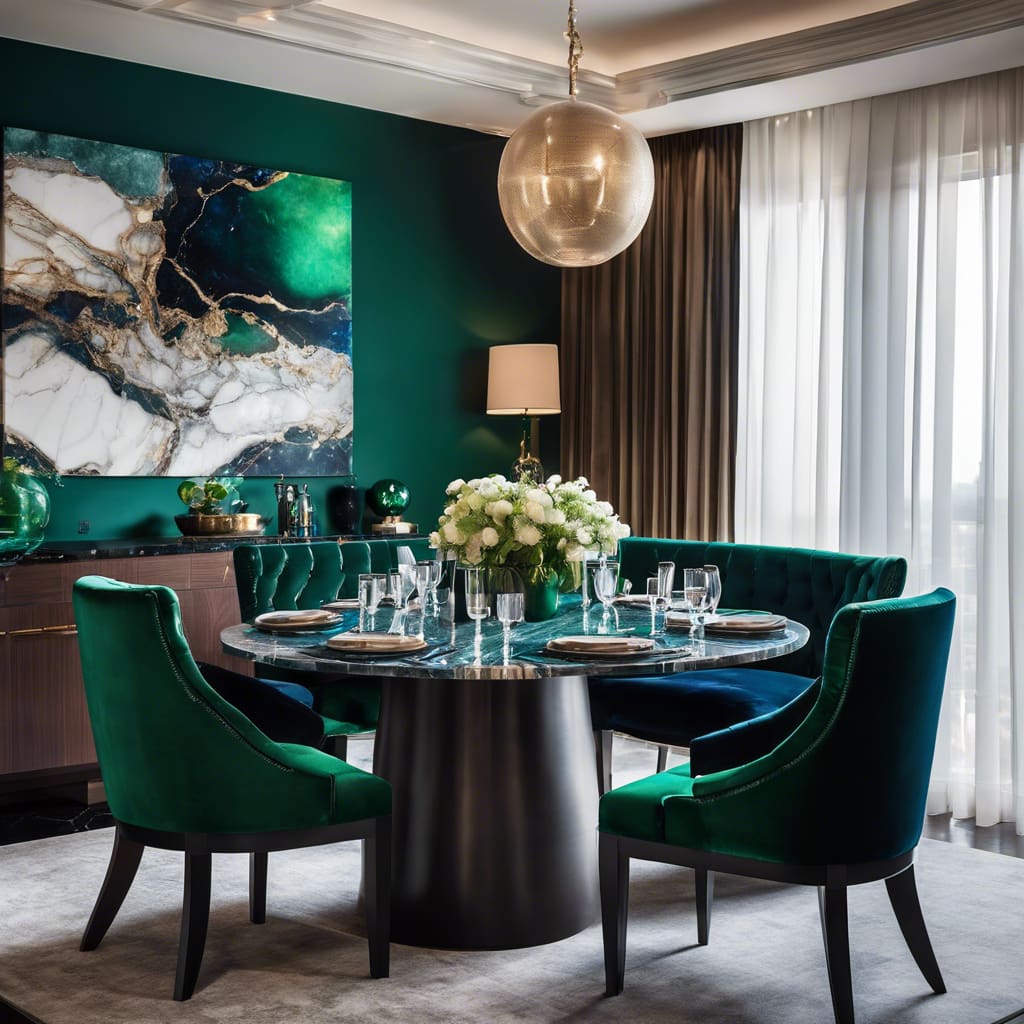
Incorporate Art and Visual Interest
Artwork and decorative elements play a pivotal role in creating a visually engaging dining space that captures attention. Strategically placing pieces throughout the room not only livens up blank walls but also establishes a captivating aesthetic.
Displaying local art, photography, or sculptures offers an excellent opportunity to give the hotel dining room a unique sense of place.
For especially eye-catching focal points, statement pieces such as ornate chandeliers, vibrant murals, or dramatic wall installations never fail to impress. Whether going for sleek modern or ornate classical, these commanding centerpieces define the character of the room.
Thoughtfully incorporating art and décor elevates a hotel dining room from simplistic to spectacular.
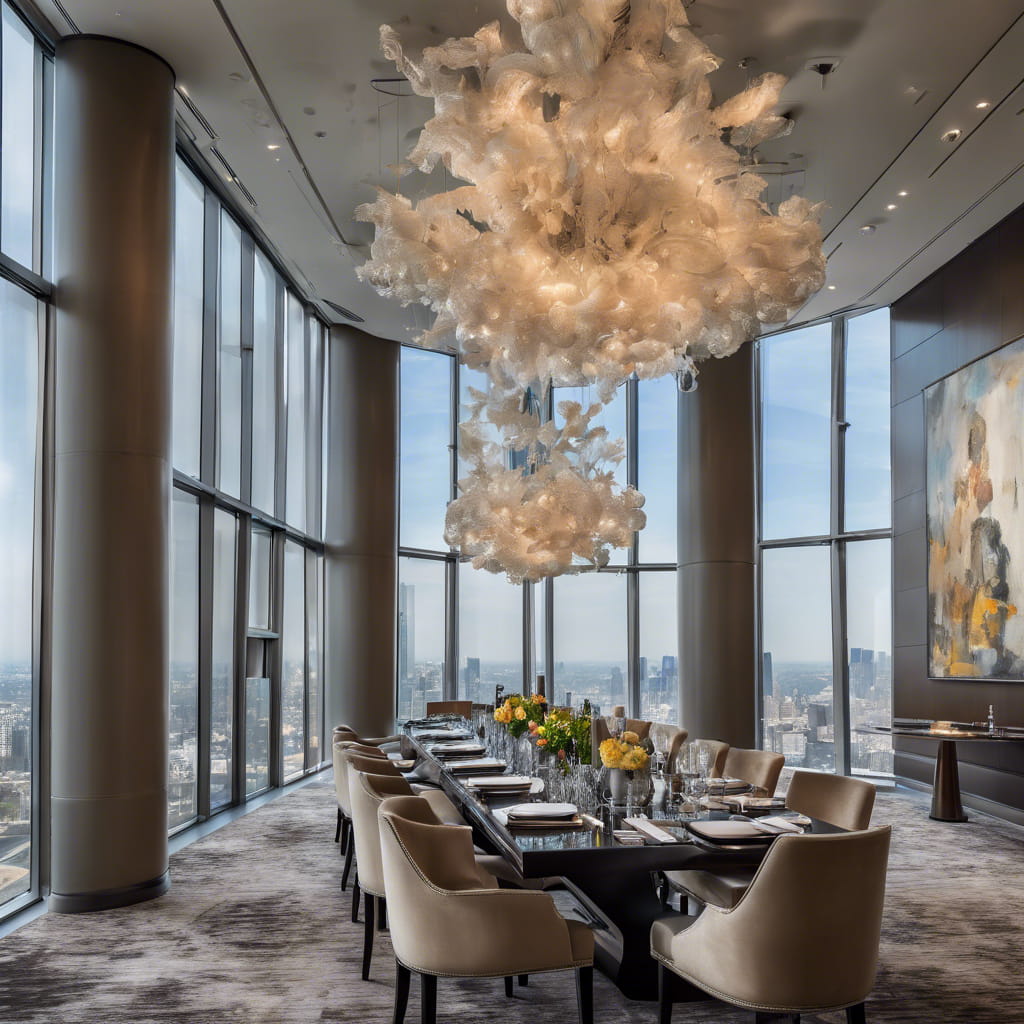
Technology Enhances the Dining Experience
Technology offers innovative ways to streamline dining room operations while simultaneously enhancing the guest experience.
- Interactive menus displayed on tablets at the table allow guests to easily view menu options, nutritional information, and sourcing details.
- Integrating personalized ordering systems enables servers to capture individual guest preferences and restrictions. By storing this data, the restaurant can provide customized service on repeat visits.
- Wireless charging stations at tables or bars give guests a convenient way to charge phones and other devices during their stay.
- Digital tableside payment systems allow guests to quickly pay their checks via their mobile devices. This increases convenience, especially when guests may be in a hurry.
By leveraging technology appropriately, hotels can increase revenue through faster table turns while simultaneously impressing guests with a seamless, futuristic dining experience.
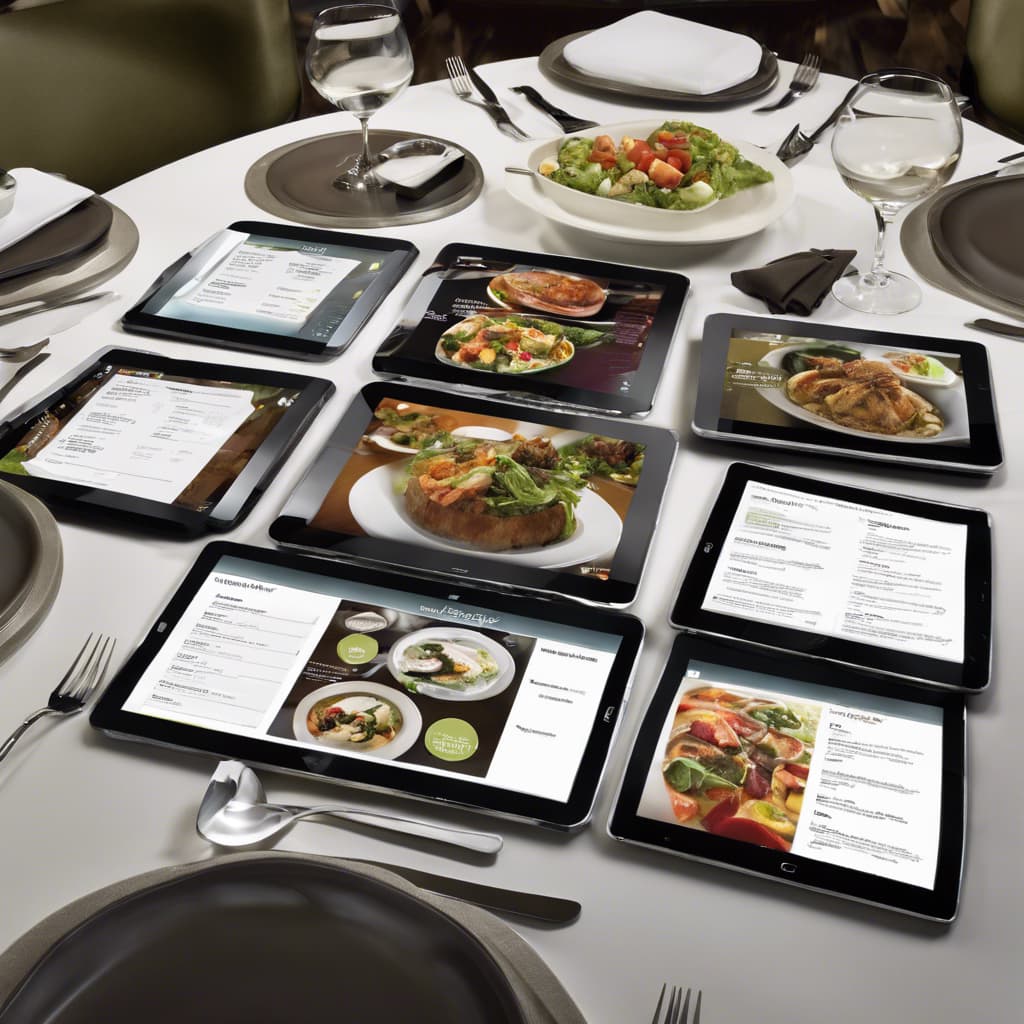
Create a Sense of Privacy
A relaxing and intimate dining experience is often the highlight of a guest’s hotel stay. When designing your hotel’s dining area, it’s important to incorporate elements that allow for concealment without compromising the ambiance.
- Semi-private booths lined with curtains create intimate spaces where guests can carry on conversations without being overheard.
- Movable screens and partitions can also be used between tables or booths to increase privacy. Opt for panels made of warm materials like wood or fabric that complement your decor.
- With careful spacing of seating, you can designate discreet zones that feel removed from the main dining room. Place booths or banquettes along the walls or corners to establish a sense of separation.
By factoring in seclusion and intimacy within your dining room design, you create versatile spaces that cater to different preferences.
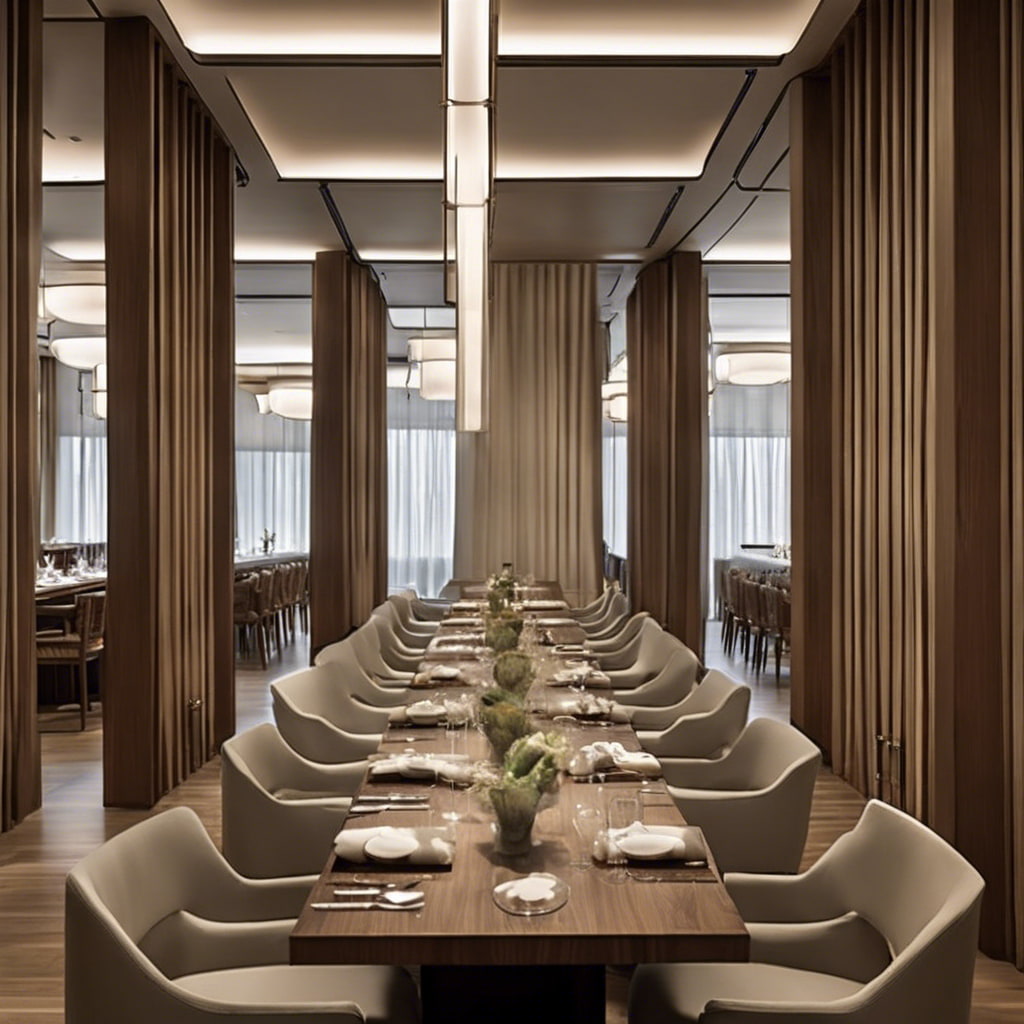
Elevate Your Dining Experience: Glamorous Designs for Hotel Dining Rooms
At Glamorous Design Company, we specialize in transforming hotel dining rooms into captivating spaces that seamlessly blend comfort and sophistication.
Our expertise lies in the meticulous selection of dining chairs, booths, banquettes, and other seating options to create a welcoming ambiance that encourages interaction.
Whether you envision intimate gatherings or cater to large groups, our balanced mix of seating types ensures both exclusivity and connection.
Individual chairs and bar stool seating add flexibility and casual vibes to accommodate solo diners and unplanned gatherings.
Explore our website to peruse a portfolio of breathtaking designs that redefine luxury in hotel dining. Let’s collaborate to turn your vision into a reality and create a dining experience that guests will cherish. Your journey to exquisite dining design begins here!
FAQ
How do you design a dining room?
Designing a dining room involves considering factors such as space, functionality, aesthetics, and the desired atmosphere. Key elements include selecting appropriate furniture, lighting, decor, and color schemes to create a welcoming and comfortable space for dining.
What is a dining room in a hotel?
A dining room in a hotel is a designated area where guests can enjoy meals, whether it’s a restaurant, breakfast area, or private dining space. It is typically designed to accommodate guests’ dining needs and preferences, offering a variety of seating options and ambiance.
What is a dining room layout?
A dining room layout refers to the arrangement of furniture, tables, and seating within the dining space. Common layouts include traditional, open-plan, formal, and casual arrangements, each tailored to the specific needs and style of the dining area.
How to design a functional dining room?
Designing a functional dining room involves optimizing the layout, maximizing space, and ensuring easy flow of traffic. Key considerations include choosing appropriate furniture sizes, providing sufficient lighting, incorporating storage solutions, and creating a comfortable and inviting atmosphere for dining.
What are the different types of dining in hotels?
Hotels often offer various dining options to cater to different guest preferences and occasions. These may include formal restaurants, casual cafes or bistros, rooftop or outdoor dining areas, room service, buffet-style dining, and private dining rooms for special events or gatherings.




